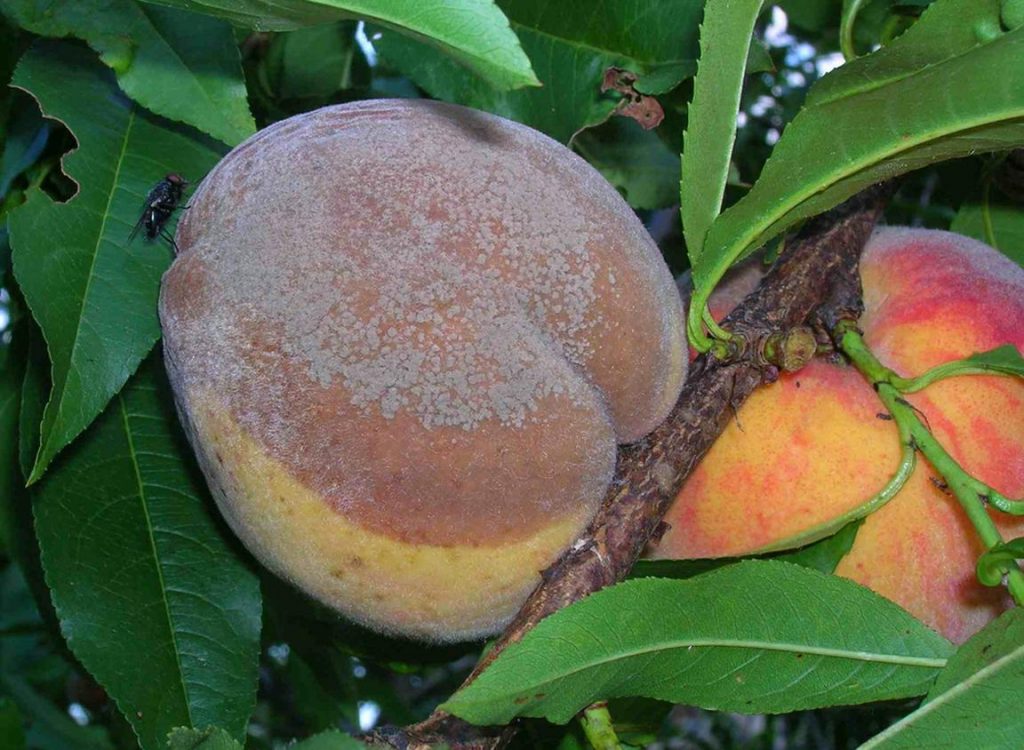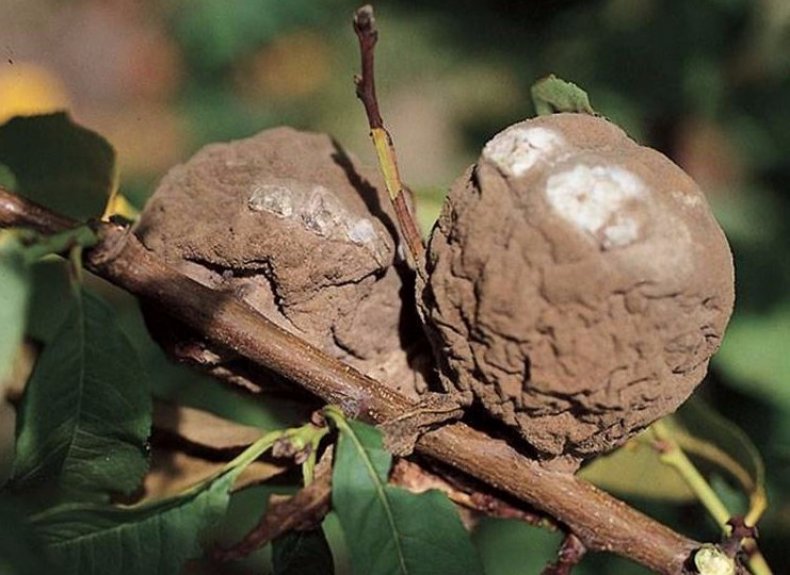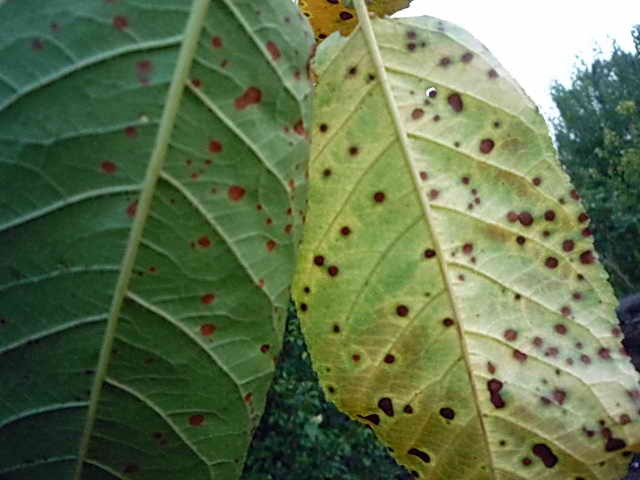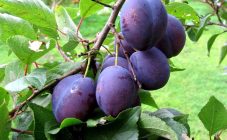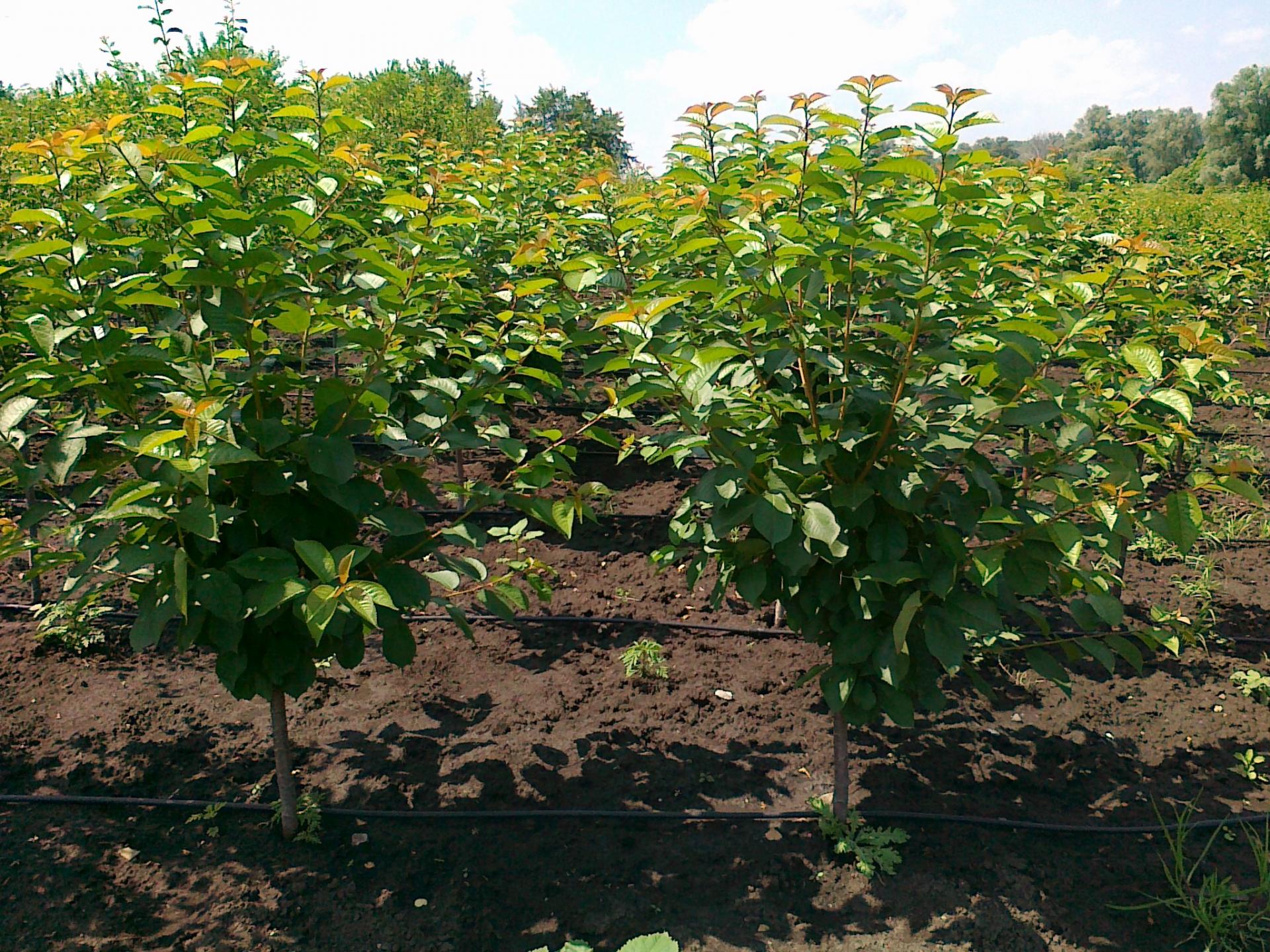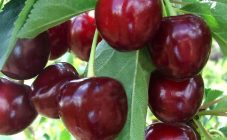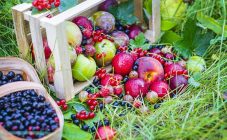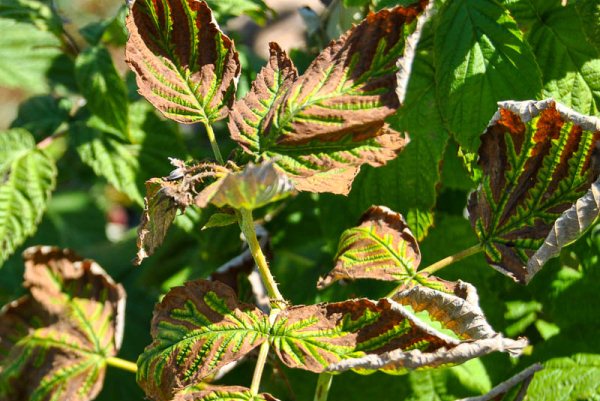Content:
Peach pulp is distinguished by its delicious taste and pleasant aroma. In addition, the culture contains a lot of minerals, fiber and vitamins useful for the body. But this plant cannot be called easy to grow. A peach feels good only in a warm climate that is ideal for it. Diseases of peach trees and their treatment give the gardener a lot of trouble.
Major diseases of culture
Each culture is more prone to certain diseases than others. For example, an apple tree is prone to scab, and a plum tree is prone to moniliosis. For a peach, such a disease is curliness. The disease begins to manifest itself in early spring, when overwintered spores grow into shoots and infect the forming leaves.
Curliness can be recognized by the appearance of red convex spots on young leaves. Disputes affect the leaves only on the 5-8th day of their growth; two-week-old foliage is no longer in danger. Curl covers only fresh shoots and last year's growth. With an outbreak of the disease, the buds are deformed, and the harvest can not be expected this and next season.
Other common peach diseases:
- Clasterosporium disease (perforated leaf spot) is fungal in nature. The causative agent hibernates in fallen leaves and wood. The disease begins with the appearance of holes on the leaves, similar to punctures. Then purple spots form on the leaf plates, inside of which the tissue disappears, forming holes. The spores spread very quickly throughout the plant. Occasionally, signs of peach pitting can be confused with an overdose of copper-containing fungicides. If clasternosporiasis does occur, symptoms will progress. Prevention is of great importance in the fight against the disease;
- Fruit rot, or moniliosis - a fungal disease, primarily affecting peach fruits, which are damaged or cracked. Mushroom mycelium is spread by insects, wind and rainwater. The disease causes drying of leaves, flowers and blackening of the shoots. On the fruits, gray bumps appear, consisting of ripe spores, the pulp begins to rot. Later, such fruits dry out. In order not to lose the crop, it is necessary to cut off all diseased shoots and remove the affected fruits at the first signs of moniliosis;
- Mealy dew - a dangerous fungal disease. Spores are carried by gusts of wind and raindrops. White spots with a mealy bloom appear on peach fruits. Leaves are affected in the same way. The diseased leaves curl up and then fall off, the fruits begin to crack and rot. More serious damage threatens trees with a dense crown. Infected shoots must be cut and burned so that the disease does not spread, otherwise the garden will be seriously damaged;
- Coccomycosis peach. The disease also occurs on other stone fruit crops (cherry, sweet cherry, plum). The causative agent of the disease is a marsupial mushroom. It is important to stop the development of coccomycosis in the area in order to prevent infection of other trees. Plants weakened by the disease hibernate poorly and may stop fruiting. Small red-brown spots appear on the affected leaves, which then merge into a common spot. The leaves then dry up and the tree sheds them. On the reverse side of the leaf blades, white or pink clusters of fungal spores are observed.As a result of the disease, the fruit becomes watery and unpleasant to the taste;
- Chlorosis peach can be infectious and non-infectious. The infectious form is transmitted by pests that spread fungi and viruses. In the non-infectious form, the peach reacts to iron deficiency and improper agricultural practices. In the leaves, the process of photosynthesis is disrupted, and the production of chlorophyll is reduced. The disease is manifested by premature yellowing and leaf fall. Green veins stand out on the leaf plates, the edges begin to curl. The buds and flowers are deformed and wither, then the tops of the shoots begin to dry;
- Cytosporosis affects the intermediate layer between the bark and the inside of the trunk. The disease begins with the defeat of the tops of the shoots, and then goes down below. If you do not stop the process and allow damage to the trunk, it will already be difficult for the tree to help. The branches affected by the fungus are cut out completely, otherwise the disease will resume. Removed shoots must be burned;
- Gum removal (gommosis) is a non-infectious disease of stone fruit cultures. On the wounds of the trunk and skeletal branches, a sticky, thick yellow substance (gum) appears. The course of the disease is aggravated by the entry of pathogenic bacteria and fungi into the wound. Care should be taken not to injure trees and protect them from sunburn to avoid cracking.
In addition to diseases, the crop can be annoyed by harmful insects. Peach pests and the fight against them are something that cannot be avoided even with the best care. They can come from neighboring areas and travel long distances through the air. More often than others, the eastern and peach moth appear on the peach. There are also weevils, aphids, scale insects on a peach, how to deal with them? Compliance with sanitary standards and preventive treatments of the site will help control the number of insects.
Treatment and prevention measures
When growing a peach, diseases and their control should be given the utmost attention. At the same time, one should not forget about prevention. The earlier the steps are taken, the more successful the result will be. Sanitary pruning should be done in the spring and fall. During it, all the shoots on which the mycelium is present are cut out. The cut branches must be burned.
Curliness
When the buds swell, the tree must be treated with a 1% solution of copper sulfate twice, with an interval of 2-4 days. At the end of flowering, the branches are recommended to be sprayed with polycarbocin. Trees requiring treatment are sprayed with Ridomil Gold, Profit, Ordan. Well destroy the causative agent of the disease Skor, Horus. From folk remedies, gardeners use tobacco infusion.
Clasterosporium disease
All wounds and cracks on the trunk are covered with garden varnish. At the end of the season, the fallen leaves must be disposed of, and the earth must be dug to a depth of 30 cm. Then the soil is spilled with a 3% solution of nitrafen. If peach clotterosporiasis is detected, treatment is carried out with drugs: Captan, Skor, Signum, Horus. They are also used for preventive treatments.
Moniliosis
During flowering, the tree is sprayed with 1% Bordeaux liquid. At the fruiting stage, treatment with copper oxychloride is carried out every 20 days. In total, you need to do 4 treatments. Before flowering, a diseased tree is treated with Horus, at the end of flowering, Topaz is used and after that - Topsin. These measures will destroy both the fungus itself and its carriers.
Powdery mildew
At the first signs, the affected parts of the plant are removed. Immediately after flowering, the peach is sprayed with Topaz or Topsin.Repeat treatments every 10-14 days until the signs of the disease disappear. Simultaneous insecticide treatment will be helpful.
Coccomycosis
With coccomycosis, red spots and dots on peach leaves quickly spread, what should I do? It is necessary to carry out treatment with fungicides. Suitable drugs: Captan, Nitrafen, Penconazole, Fitosporin, Cinebrom. Folk remedies do not completely eliminate the disease, but increase the immunity of the tree. You can fight coccomycosis with a solution of 1 kg of ash and 30 g of laundry soap per 5 liters of water. Treatment begins at the end of May and is repeated every 7 days.
Chlorosis
The problem of iron deficiency is eliminated by introducing drugs into the near-trunk circle: Ferrylene, Ferovit, Iron Chelate. Additionally, it is recommended to feed the peach with a complex mineral fertilizer. Infectious chlorosis is not cured, the diseased tree must be destroyed as soon as possible so that neighboring specimens do not become infected.
Cytosporosis
The disease is treated only at an early stage. The diseased area is cleaned with a knife to healthy wood. The wound is treated with a solution of copper sulfate and covered with garden varnish. In spring and autumn, Bordeaux liquid is used to prevent disease. Spraying the tree is carried out immediately after pruning.
Gum therapy
Gardeners have adapted to treat gum flow with sorrel. You can rub the wound with a fresh plant or grind it and make a compress by wrapping the barrel with foil. Over the summer, you can do this procedure 3-4 times. First you need to clean off the build-up of gum.
Peach requires close attention and care, but, despite this, remains an attractive crop for many gardeners. In addition to the prevention and treatment of diseases, he needs timely watering, top dressing, competent preparation for wintering. Only then will the harvest always be generous.
